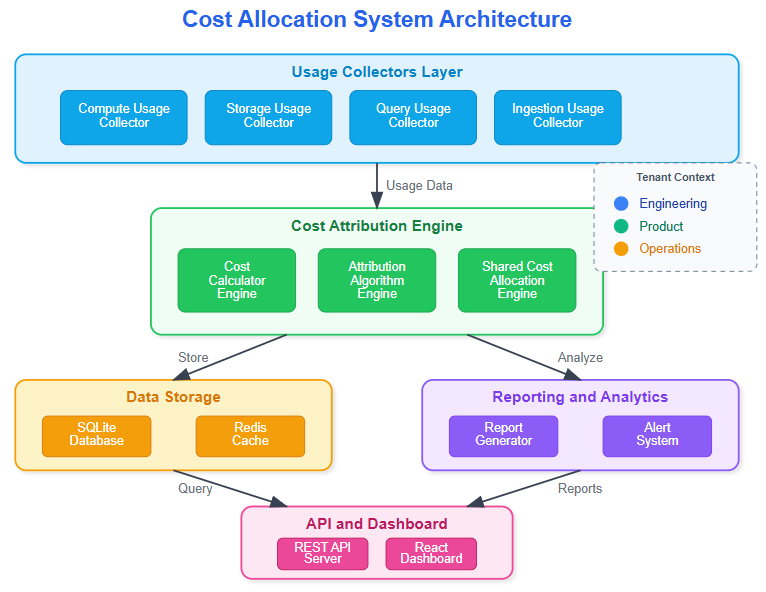Day 104: Building Cost Allocation and Usage Reporting
Making Every Log Dollar Count in Your Distributed Platform
Working Code Demo:
What We're Building Today
Today's mission transforms yesterday's metrics collection into actionable financial intelligence. You'll build a cost allocation system that tracks resource consumption per tenant, calculates actual infrastructure costs, and generates detailed usage reports. Think Netflix's internal cost tracking for different service teams or Stripe's precise resource attribution across customer segments.
Key Deliverables:
Real-time resource usage tracking by tenant/user
Cost attribution engine with configurable pricing models
Interactive reporting dashboard with drill-down capabilities
Historical usage trends and optimization recommendations
Automated billing reports and cost alerts
Core Concepts: The Economics of Distributed Systems
Resource Attribution Challenge
Multi-tenant log processing systems face a complex question: which team or customer should pay for each gigabyte stored, each query executed, or each alert generated? Unlike simple web hosting, distributed systems create shared resource pools where attribution requires sophisticated tracking.
Cost Modeling Approaches
Direct Cost Attribution: Links specific resources (CPU cores, storage volumes) directly to tenants. Simple but often inaccurate for shared infrastructure.
Proportional Allocation: Distributes shared costs based on usage ratios. More fair but requires careful metric selection to avoid gaming.
Activity-Based Costing: Assigns costs based on actual activities (log ingestion, search queries, retention periods). Most accurate but computationally intensive.
Financial Visibility Impact
Cost transparency drives behavior changes. Teams optimize log verbosity when they see storage costs. Developers tune query patterns when CPU attribution becomes visible. Financial feedback creates natural resource optimization pressure.
Context in Distributed Systems
Real-World Applications
AWS CloudWatch Logs charges per gigabyte ingested and stored, with separate pricing for queries. Your system replicates this model internally.
Datadog bills based on log volume and retention, providing detailed usage breakdowns. Enterprise customers need similar visibility for internal cost allocation.
Splunk uses complex licensing models based on daily ingestion volumes. Large organizations require granular usage tracking to manage licensing costs effectively.
System Integration Points
Your cost allocation system sits between yesterday's metrics collection and next week's optimization engines. It consumes resource utilization data, applies cost models, and produces reports that drive infrastructure decisions.



